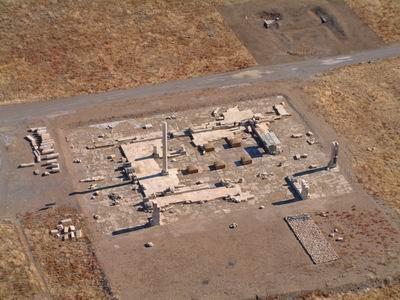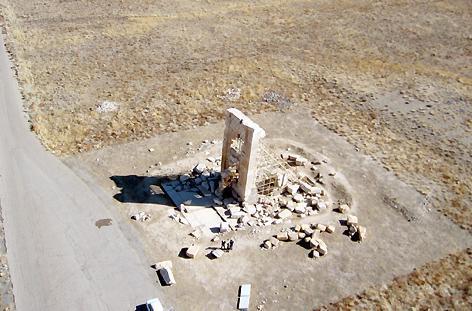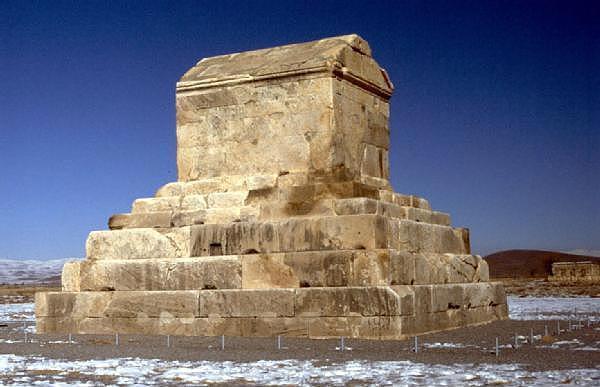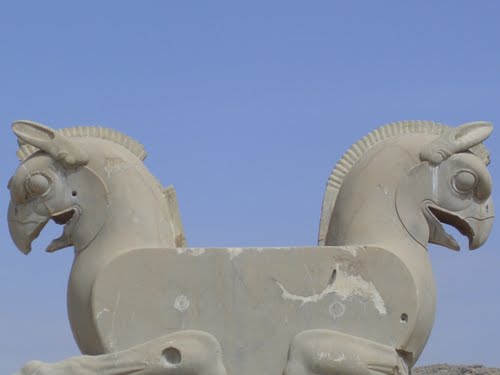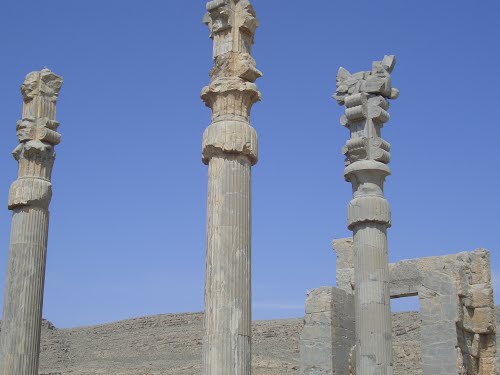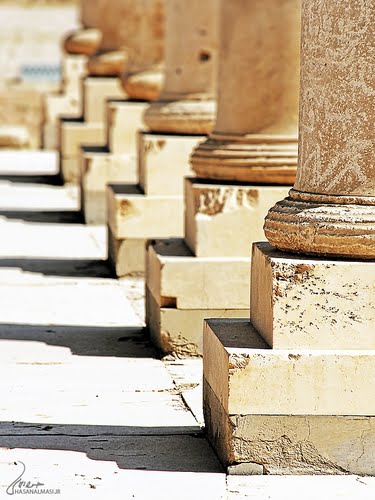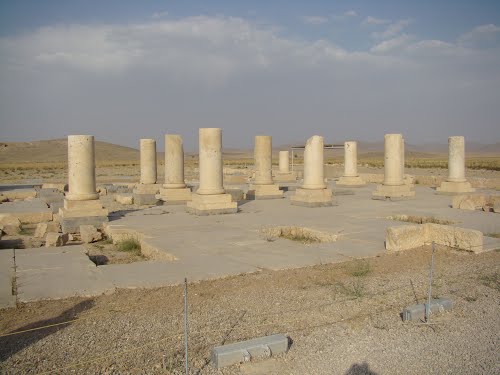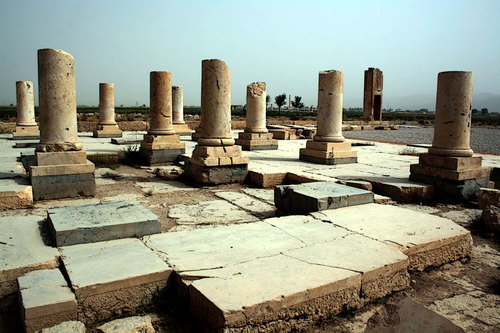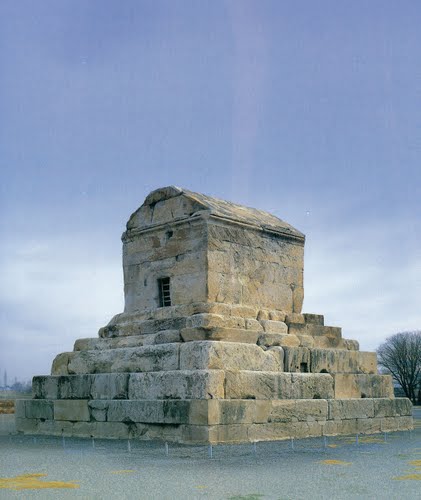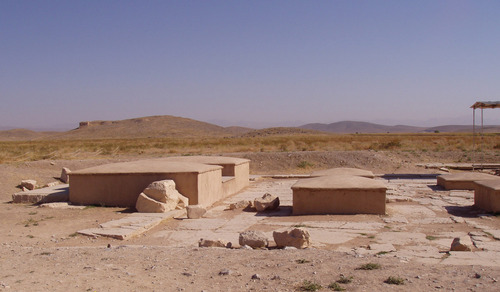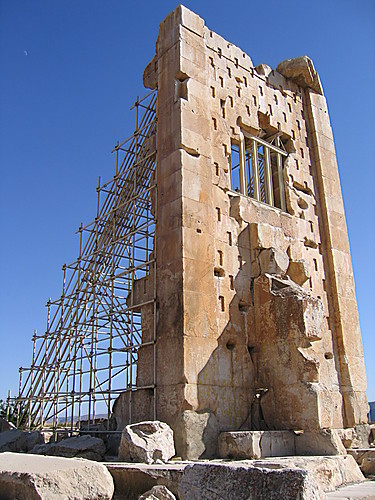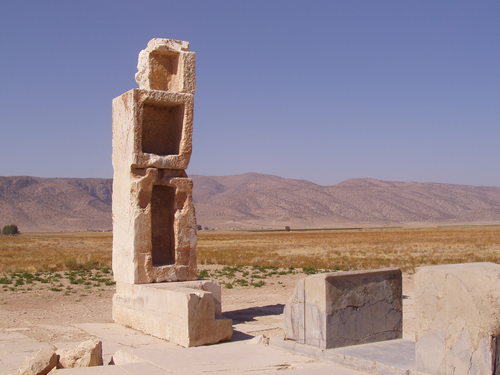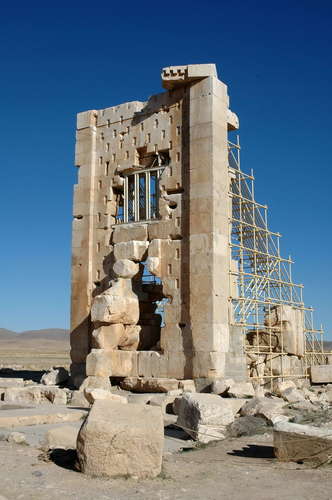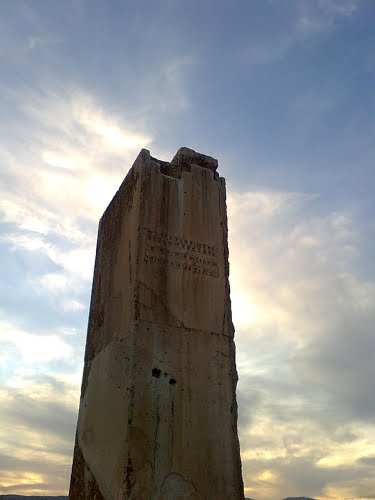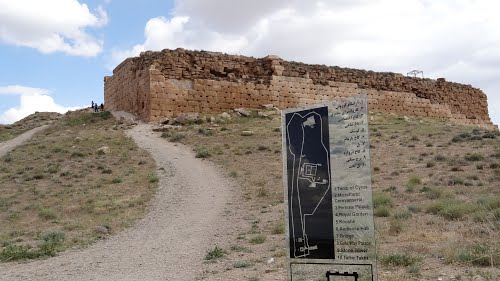Pasargadae was the capital of the Achaemenid Empire under Cyrus the Great who had issued its construction (559–530 BC), it was also the location of his tomb. It was a city in ancient Persia, located near the city of Shiraz, and is today an archaeological site and one of Iran's UNESCO World Heritage Sites.
History
Cyrus the Great began building the capital in 546 BC or later, it was unfinished when he died in battle, in 530 or 529 BC. The remains of the tomb of Cyrus' son and successor Cambyses II have been found in Pasargadae, near the fortress of Toll-e Takht, and identified in 2006.
Pasargadae remained the capital of the Achaemenid empire until Cambyses II moved it to Susa, later, Darius founded another in Persepolis. The archaeological site covers 1.6 km² and includes a structure commonly believed to be the mausoleum of Cyrus, the fortress of Toll-e Takht sitting on top of a nearby hill, and the remains of two royal palaces and gardens. Pasargadae Persian Gardens provide the earliest known example of the Persian chahar bagh, or fourfold garden design.
Tomb of Cyrus the Great
The most important monument in Pasargadae is the tomb of Cyrus the Great. It has six broad steps leading to the sepulchre, the chamber of which measures 3.17 m long by 2.11 m wide by 2.11 m high and has a low and narrow entrance. Though there is no firm evidence identifying the tomb as that of Cyrus, Greek historians tell that Alexander believed it was. When Alexander looted and destroyed Persepolis, he paid a visit to the tomb of Cyrus. Arrian, writing in the second century AD, recorded that Alexander commanded Aristobulus, one of his warriors, to enter the monument. Inside he found a golden bed, a table set with drinking vessels, a gold coffin, some ornaments studded with precious stones and an inscription on the tomb. No trace of any such inscription survives, and there is considerable disagreement to the exact wording of the text.
The design of Cyrus' tomb is credited to Mesopotamian or Elamite ziggurats, but the cella is usually attributed to Urartu tombs of an earlier period. In particular, the tomb at Pasargadae has almost exactly the same dimensions as the tomb of Alyattes II, father of the Lydian King Croesus, however, some have refused the claim. The main decoration on the tomb is a rosette design over the door within the gable. In general, the art and architecture found at Pasargadae exemplified the Persian synthesis of various traditions, drawing on precedents from Elam, Babylon, Assyria, and ancient Egypt, with the addition of some Anatolian influences.

